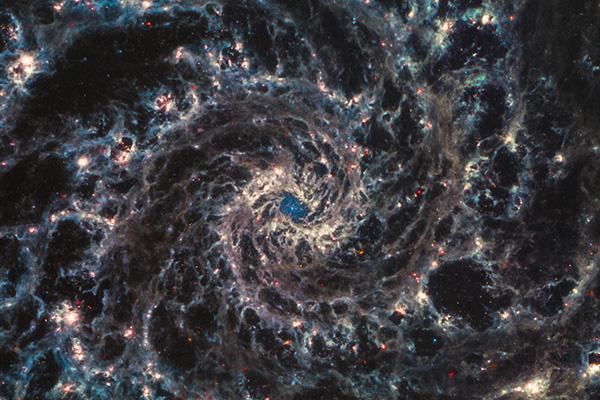
PHANGS-JWST: New views of the matter cycle from highly resolved near- and mid-infrared imaging of galaxies
Abstract:
The flow of matter and energy through galaxies and the details of the gas-star formation-feedback cycle are both major areas of current investigation with relevance to many subfields of astronomy and astrophysics. For the last decade, our "PHANGS" team (with major OSU involvement) has been building a multi-wavelength, high physical resolution data set aimed at observationally constraining timescales, efficiencies, structure, and dominant physical processes governing the major aspects of this matter cycle. Following the successful launch of JWST, this program has expanded into the infrared as we conduct PHANGS-JWST, a multiband near- and mid-IR survey of 19 galaxies that have existing coverage by ALMA, VLT/MUSE, AstroSat, and more. The new JWST IR data have revealed hidden clusters, traced out the distribution of forming stars, captured exploding stars, and shown us how the properties and abundance of small dust grains evolve across galaxies. Perhaps most exciting and unexpectedly, the JWST data have also given us a stunningly sharp view of the interstellar medium, including filamentary structure and shells and bubbles, some of which were likely carved by stellar feedback. I will summarize some of the key results from this first JWST survey of nearby star-forming galaxies, describe the next directions, and highlight the power of very high-resolution near- and mid-IR imaging to study the matter cycle in galaxies.
